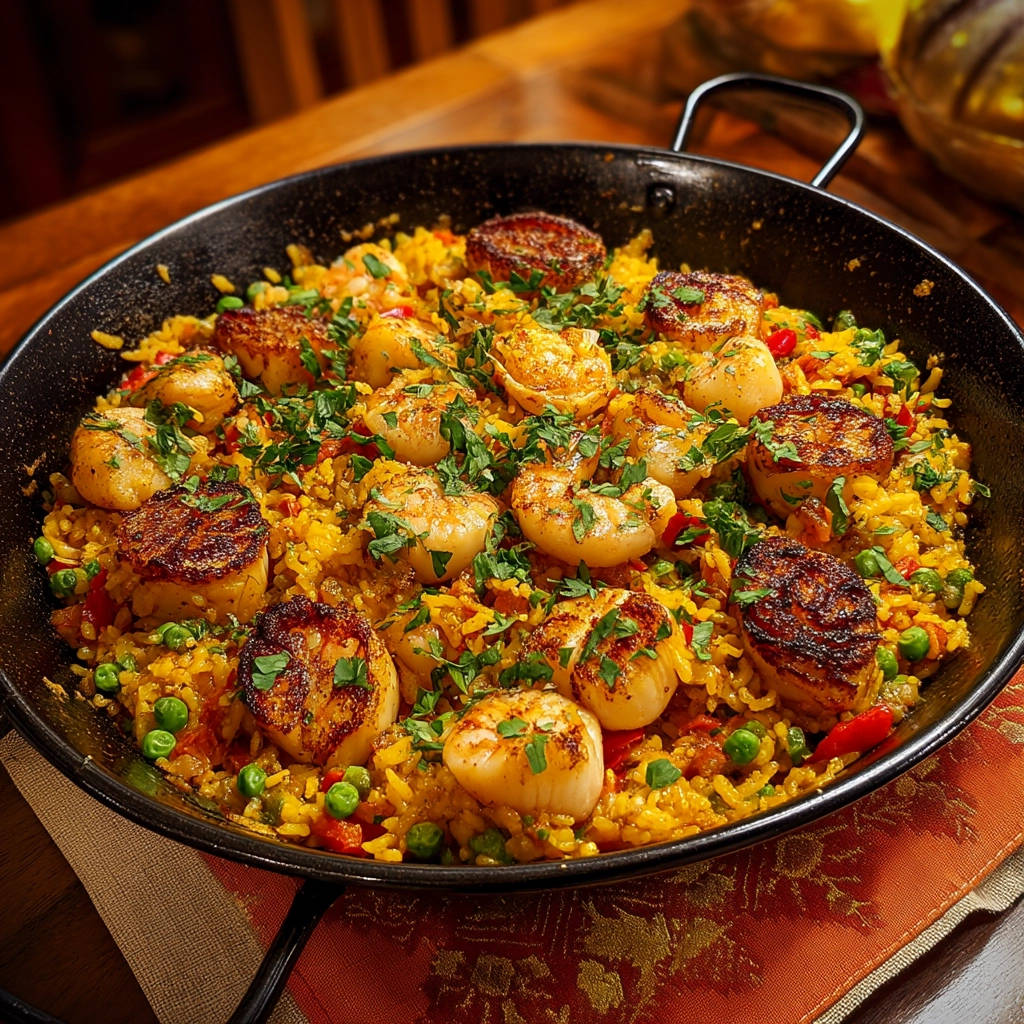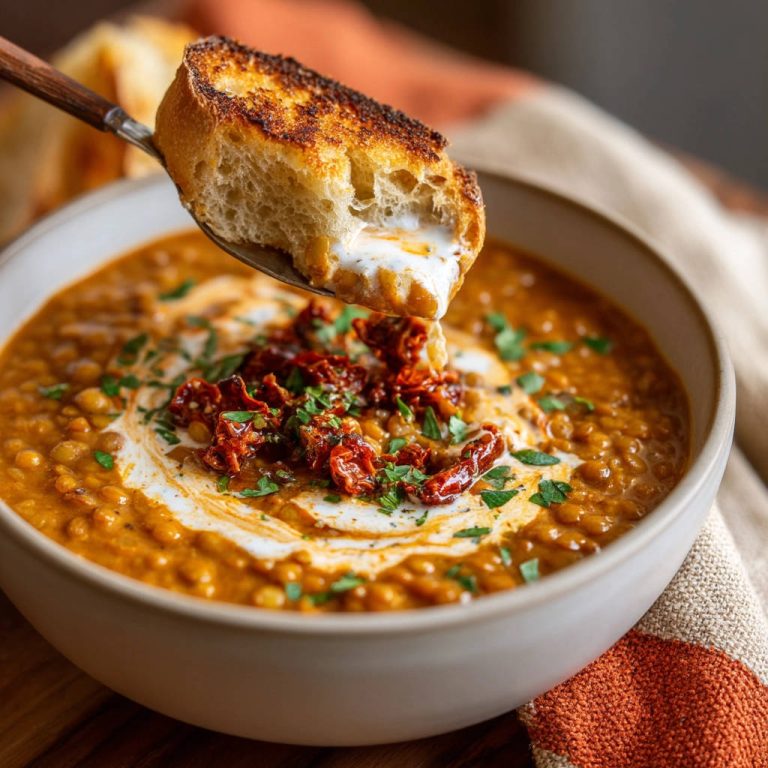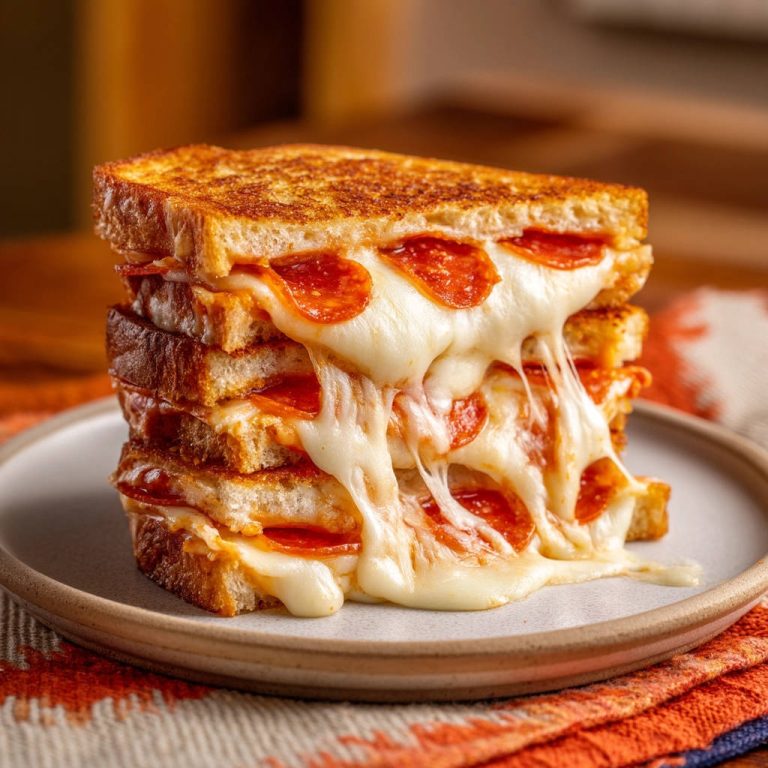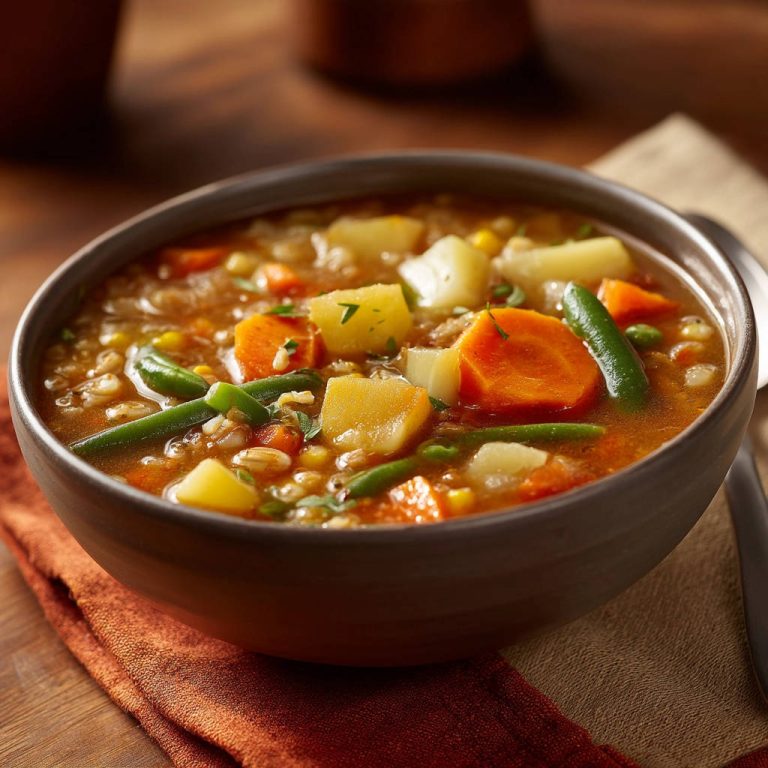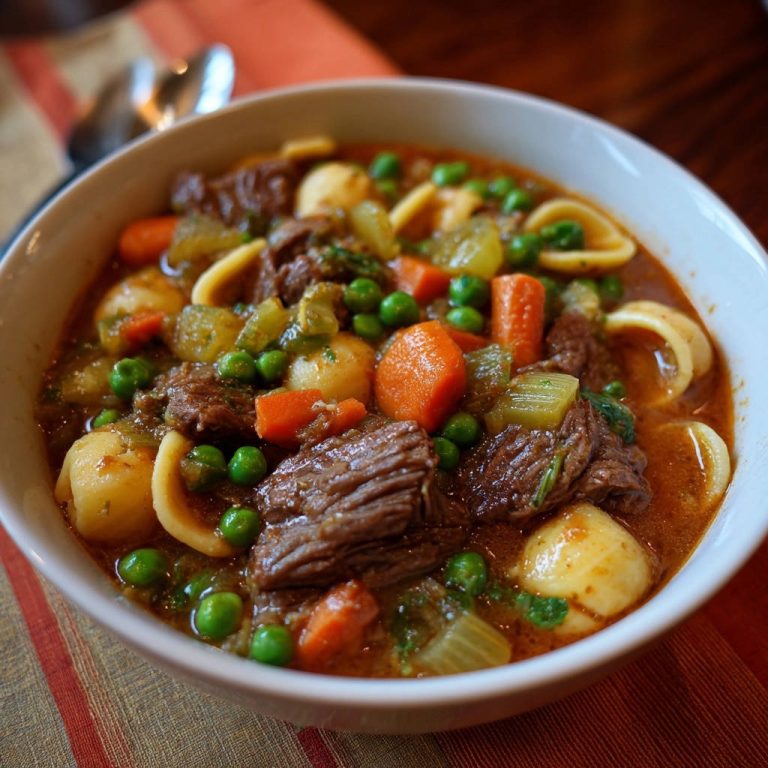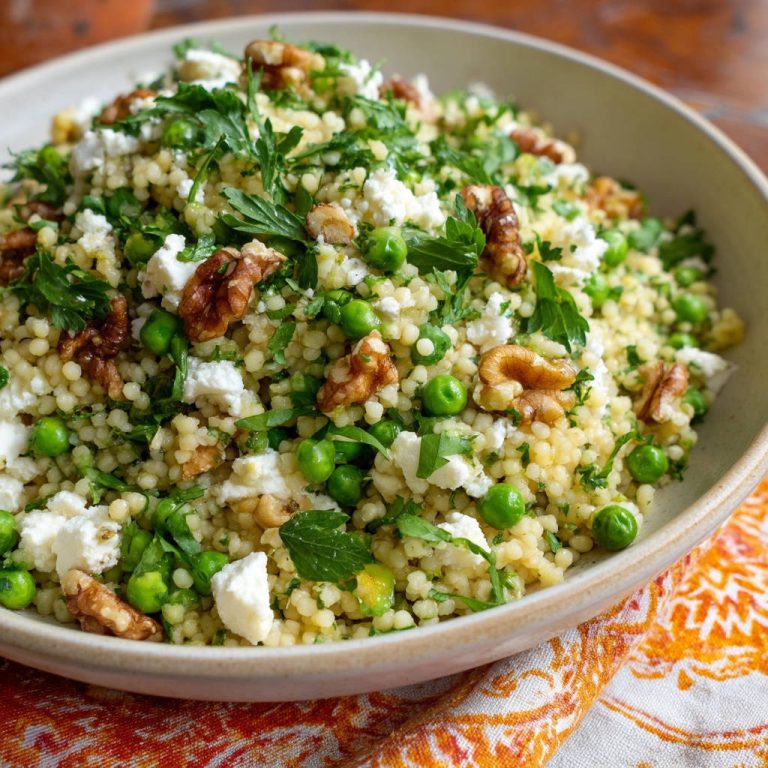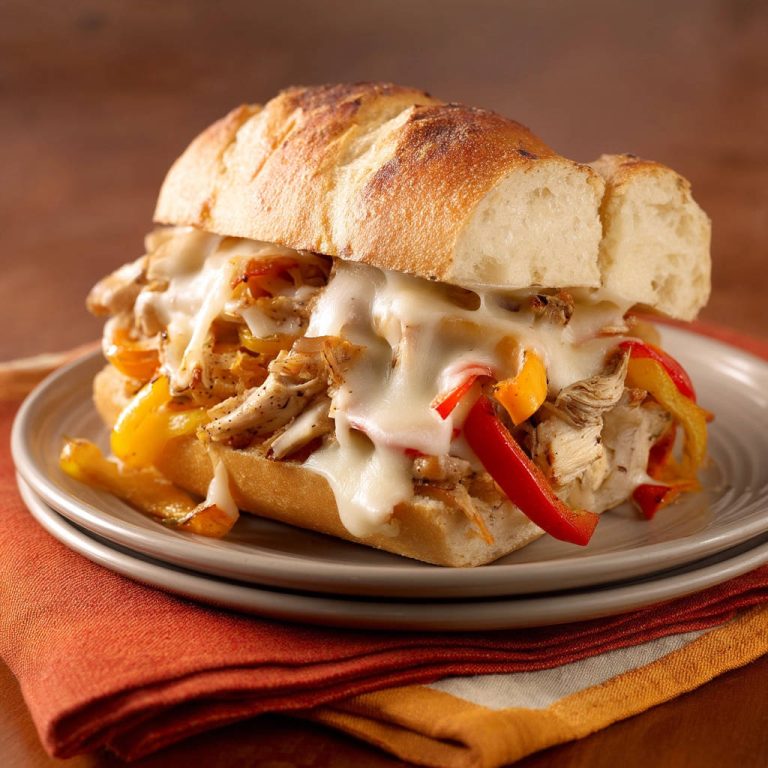Let’s be honest, there’s nothing quite as disappointing as dreaming of a delicious seafood and rice dinner, only to end up with shrimp that bounce like rubber balls and scallops that are tough and chewy. If that sounds familiar, you are absolutely not alone! Achieving that sweet spot of perfectly cooked, tender seafood can feel like hitting a moving target, especially when it’s cooked alongside rice.
For years, I struggled with this exact problem. My seafood rice dishes were flavorful, but the texture of the shrimp and scallops often fell short. Then, I discovered a simple, game-changing timing trick that completely revolutionized my cooking. This Seafood Rice Skillet recipe is the culmination of that discovery, ensuring your shrimp are succulent and your scallops are meltingly tender, every single time. Get ready for a fuss-free, incredibly delicious one-pan meal that will impress without the stress!
Why This Seafood Rice Skillet Recipe is a Keeper
Beyond the guarantee of perfectly cooked seafood, this skillet dinner offers so much to love. It’s designed for real home cooks who want maximum flavor with minimal cleanup. Here are a few reasons why this Seafood Rice Skillet will become a regular in your rotation:
- It features a clever technique that prevents overcooked seafood, a common pitfall in rice dishes.
- Most of the cooking happens in a single skillet, meaning less time scrubbing pots and pans after dinner.
- It’s packed with vibrant flavors from simple ingredients like garlic, onion, and bell pepper.
- The combination of tender rice and succulent seafood makes for a satisfying and complete meal.
- It looks beautiful when finished, making it perfect for both weeknight dinners and casual entertaining.
- It’s surprisingly adaptable to other vegetables you might have on hand.
This dish is perfect for those nights when you want something special but don’t have hours to spend in the kitchen. If you enjoy comforting skillet meals, you might also like our Creamy Skillet Chicken.
Gathering Your Ingredients for a Stellar Seafood Rice Skillet
Creating this flavorful Seafood Rice Skillet starts with selecting quality ingredients. Each component plays a vital role in building the layers of flavor and achieving the desired texture. Let’s walk through what you’ll need and why these ingredients work so well together.
We begin with the foundation – a bit of healthy fat and aromatic vegetables. A tablespoon of olive oil is our starting point, used to gently cook down a finely chopped medium onion and a chopped red bell pepper. These vegetables soften and release their sweetness, forming a base for the rice. Next, we add 2 cloves of minced garlic, cooking it just until it’s fragrant to avoid any bitterness.
The heart of the dish is the rice. We use 1 1/2 cups of short grain rice here. Short grain rice is wonderful for dishes like this because it tends to release more starch, contributing to a slightly creamy, cohesive texture that binds the other elements together beautifully. It absorbs liquid efficiently while staying tender.
For color and a touch of warm, earthy flavor, we stir in 1 teaspoon of turmeric. Turmeric gives the rice a lovely golden hue. If you’re feeling fancy or want a more traditional, subtle floral note and a deeper yellow color, a pinch of saffron threads steeped in a little warm broth is an excellent substitute. Either way, this spice adds a dimension beyond just the savory ingredients.
The rice needs liquid to cook, and 3 cups of chicken or vegetable broth provides that, along with added depth of flavor compared to just water. Seasoning is crucial, so we’ll add salt and black pepper to taste to the broth as it simmers, ensuring the rice itself is well-seasoned.
Adding a pop of color and sweetness towards the end are 1 cup of frozen peas. They are a quick addition that requires no prep and cook perfectly from frozen using the residual heat.
Now for the stars of the show: the seafood! You’ll need 1 pound of large shrimp, peeled and deveined, and 1 pound of sea scallops, patted dry. Using large shrimp is recommended as they are less likely to overcook quickly. Patted-dry scallops are absolutely essential for getting that beautiful sear later – moisture is the enemy of browning! Ensure both are fresh and high-quality for the best results.
Finally, fresh is best for garnish. Plenty of chopped fresh parsley adds a bright, herbaceous finish that lifts the richness of the dish.
Complete Ingredient List for Your Convenience:
- 1 tablespoon olive oil
- 1 medium onion, finely chopped
- 2 cloves garlic, minced
- 1 red bell pepper, chopped
- 1 1/2 cups short grain rice
- 1 teaspoon turmeric or a pinch of saffron threads
- 3 cups chicken or vegetable broth
- 1 cup frozen peas
- 1 pound large shrimp, peeled and deveined
- 1 pound sea scallops, patted dry
- Salt and black pepper to taste
- Chopped fresh parsley for garnish
Crafting Your Seafood Rice Skillet: Step-by-Step Perfection
Now that we have our ingredients ready, let’s dive into the simple yet effective process for creating this amazing Seafood Rice Skillet. The key to success lies in the timing, especially with the seafood. Follow these steps carefully, and you’ll be rewarded with tender, flavorful results.
-
Begin by heating your chosen cooking vessel. Pour the olive oil into a large skillet or a paella pan – the wider surface area of a paella pan is great for even cooking, but any large skillet will work beautifully. Heat it over medium heat until the oil shimmers slightly. Add the finely chopped onion and red bell pepper. Your goal here is to soften them and bring out their natural sweetness, which usually takes about 5 to 7 minutes, stirring occasionally. Once they’ve softened, add the minced garlic and cook for just 1 more minute. Watch the garlic carefully; you want it to become fragrant, not browned or burned, as burnt garlic can taste bitter.
-
Next, introduce the short grain rice directly into the skillet with the cooked vegetables. Stir it in well, ensuring the rice gets coated in the oil and mixes with the aromatics. Add the turmeric or saffron threads at this stage. Cook and stir for 2 to 3 minutes, effectively “toasting” the rice. This step is crucial! Toasting the rice helps to develop a nutty flavor and can actually help the grains hold their shape better as they cook, preventing them from becoming mushy. You’ll see the edges of the rice grains start to look slightly translucent.
-
Pour in the chicken or vegetable broth. Season generously with salt and black pepper. Stir everything together to make sure nothing is sticking to the bottom of the pan. Bring the liquid to a gentle simmer over medium heat. Once simmering, immediately reduce the heat to low, cover the skillet tightly, and let it cook undisturbed for 15 minutes. During this time, the rice is absorbing the liquid. After 15 minutes, most of the liquid should be absorbed, and the rice will be partially cooked but still quite firm – it’s not ready to eat yet, and that’s exactly what we want!
-
While the rice is doing its initial cook, turn your attention to the seafood prep. Pat the sea scallops very dry using paper towels. This step cannot be skipped! Excess moisture on the scallops will prevent them from getting a nice golden-brown sear. Season both the patted-dry scallops and the peeled shrimp with salt and pepper on all sides.
-
Here’s the clever technique that guarantees tender scallops: Sear them separately! Heat a separate smaller pan over medium-high heat with a little bit of oil. Once the pan is hot (you can flick a little water in, and it should sizzle vigorously), add the seasoned scallops in a single layer, being careful not to overcrowd the pan (cook in batches if necessary). Sear for just 1 to 2 minutes per side. You are only aiming for a beautiful golden crust on the outside. The scallops should still be mostly raw and translucent in the center. This quick, high-heat sear builds flavor and texture without cooking them through.
-
Now, it’s time to bring it all together. Uncover the large skillet with the partially cooked rice. Evenly arrange the separately seared scallops and the raw seasoned shrimp over the top of the rice. Scatter the frozen peas over everything. Cover the skillet again and continue cooking over low heat for another 5 to 7 minutes. This is where the residual heat from the rice finishes cooking the shrimp and scallops gently. The shrimp will turn pink and opaque when cooked through. The scallops should feel firm on the outside but yield slightly when you press them gently. This indicates they are cooked just right – no longer translucent inside. Avoid overcooking at this stage!
-
Once the seafood is cooked, remove the skillet from the heat. Keep it covered and let it stand for 5 minutes. This resting period allows the flavors to meld and the residual heat to finish cooking everything gently, ensuring moisture is retained. Finally, uncover and generously sprinkle the top with freshly chopped parsley before serving.
Tips for Achieving Seafood Rice Skillet Perfection
Even with the timing trick, a few extra tips can help ensure your Seafood Rice Skillet turns out restaurant-quality every time. Paying attention to these small details makes a big difference!
- Choose Fresh Seafood: Start with the best quality shrimp and scallops you can find. Fresh seafood cooks better and tastes significantly better. If using frozen, ensure it’s fully thawed in the refrigerator overnight and patted extra dry.
- The Scallop Sear is Key: Don’t skip the separate searing step for the scallops! Make sure the pan is hot and the scallops are bone dry. A proper sear adds a layer of caramelized flavor and texture that you won’t get by just steaming them on top of the rice initially.
- Don’t Peek Too Much: While the rice and later the seafood are cooking covered, resist the urge to lift the lid constantly. This releases steam, which is crucial for cooking the rice and gently finishing the seafood. Let the covered cooking times do their job.
- Listen to the Rice: After the initial 15 minutes, if you tilt the pan slightly, you should see very little visible liquid. If there’s still a significant amount, let it cook for another minute or two (covered) before adding the seafood. The rice should be al dente, not fully cooked, before the seafood goes in.
- Don’t Overcrowd the Scallop Pan: If you have a lot of scallops, sear them in two batches. Crowding the pan lowers the temperature and prevents a good sear, causing them to steam instead.
- Seafood Cook Time is a Guideline: The 5-7 minutes for the seafood is an estimate. The best indicators are visual: shrimp are pink and opaque, scallops are firm but yield slightly. Different sizes of shrimp and scallops may cook faster or slower.
- Resting is Important: Letting the skillet rest off the heat, covered, allows the residual heat to finish cooking anything perfectly and lets the flavors meld. Don’t skip this!
- Turmeric vs. Saffron: Turmeric gives a strong color and earthy flavor. Saffron provides a more delicate color and a unique, slightly floral aroma and taste. Use whichever you prefer or have on hand. A little saffron goes a long way!
Customizing Your Seafood Rice Skillet
This recipe is wonderfully versatile. Here are a few ideas to change things up (while sticking to the no alcohol/pork rule!):
- Add More Veggies: Feel free to add other quick-cooking vegetables along with the peas, such as chopped zucchini, spinach (stir in right at the end to wilt), or small broccoli florets. You could also add a pinch of red pepper flakes with the garlic for a touch of heat, similar to what you might find in some pasta dishes like our Creamy Garlic Shrimp Orzo.
- Vary the Seafood: Small pieces of firm white fish (like cod or halibut) could be added with the shrimp. Just ensure they are cut into roughly equal-sized pieces so they cook at the same rate. Avoid delicate fish that might fall apart. Mussels or clams could also be steamed on top, adding them when you add the shrimp and scallops.
- Different Rice: While short grain rice is ideal for texture, you could experiment with medium grain rice (like Arborio, though the method isn’t exactly risotto) or even basmati or jasmine. However, cooking times and liquid amounts might need slight adjustments. If using brown rice, you’ll need significantly more liquid and a much longer initial cooking time before adding the seafood.
What to Serve With Your Skillet
This Seafood Rice Skillet is a complete meal in itself, but pairing it with a simple side can elevate the experience. A fresh, crisp green salad is always a good choice. Our Easy Kale Salad or a simple arugula salad with a light vinaigrette would be lovely. Some crusty bread for soaking up any remaining flavorful juices is also highly recommended. You could also serve it alongside Crispy Roasted Brussels Sprouts for an extra vegetable boost.
Your Seafood Rice Skillet Questions Answered (FAQ)
Got questions about making the perfect Seafood Rice Skillet? Here are some common ones I hear:
Can I use pre-cooked shrimp?
I strongly advise against using pre-cooked shrimp for this recipe. Pre-cooked shrimp are already fully cooked, and adding them to the skillet for the final cooking time will inevitably lead to them becoming tough and rubbery. Using raw shrimp allows them to cook gently in the residual heat alongside the scallops, resulting in a much better texture.
Why do I sear the scallops separately?
Searing the scallops separately in a hot pan for just a minute or two per side gives them a beautiful, flavorful golden crust. If you tried to get this crust while they were steaming on top of the rice, they would be completely overcooked by the time any browning occurred. This method builds flavor first, then allows them to finish cooking gently with the rice, ensuring they stay tender.
Can I use different types of rice?
Short grain rice is recommended because its starch content helps create a slightly creamy, cohesive dish. While you can technically use other types like medium grain or even long grain (like basmati or jasmine), the final texture will be different, and you may need to adjust the amount of broth and cooking time. Long grain rice, for example, won’t be as creamy.
How can I tell when the seafood is perfectly cooked?
For shrimp, they will turn a vibrant pink color and become opaque all the way through. There should be no grey or translucent spots. For scallops, they will become firm to the touch on the outside but still yield slightly when pressed. If they feel hard and springy, they are likely overcooked. Cutting into one to check the center for opacity is always an option if you’re unsure, but try to avoid doing this too much to keep them juicy.
Can I add other spices?
Absolutely! This dish is quite versatile. You could add a pinch of smoked paprika for depth, a touch of cumin for a warmer flavor, or even a tiny pinch of cayenne pepper for a little heat. Italian seasoning or a bay leaf added to the broth during the rice cooking stage could also be interesting additions.
What’s the best way to store and reheat leftovers?
Store any leftovers in an airtight container in the refrigerator for up to 2-3 days. Reheating seafood can be tricky. The best way is to gently warm it on the stovetop over low heat, adding a splash of broth or water if the rice seems dry. Avoid high heat or prolonged microwave heating, as this will quickly make the seafood tough.
Enjoy Your Homemade Seafood Rice Skillet!
There you have it! The secret to a truly spectacular Seafood Rice Skillet that banishes tough, rubbery seafood forever. This recipe brings together simple ingredients and a clever technique to create a flavorful, satisfying, and beautiful one-pan meal. It’s perfect for a quick weeknight dinner but elegant enough to serve to guests. Give this recipe a try and taste the difference that proper seafood timing makes.
We’d love to hear how your Seafood Rice Skillet turns out! Leave a comment below, or share your creation with us. Happy cooking!
Seafood Rice Skillet
Ingredients
- 1 tablespoon olive oil
- 1 medium onion, finely chopped
- 2 cloves garlic, minced
- 1 red bell pepper, chopped
- 1 1/2 cups short grain rice
- 1 teaspoon turmeric or a pinch of saffron threads
- 3 cups chicken or vegetable broth
- 1 cup frozen peas
- 1 pound large shrimp, peeled and deveined
- 1 pound sea scallops, patted dry
- Salt and black pepper to taste
- Chopped fresh parsley for garnish
Directions
- Heat olive oil in a large skillet or paella pan over medium heat. Add onion and red bell pepper and cook until softened, about 5-7 minutes. Add garlic and cook for 1 minute more until fragrant.
- Stir in the rice and turmeric or saffron, toasting the rice for 2-3 minutes until slightly translucent at the edges.
- Pour in the broth and season with salt and pepper. Bring to a simmer, then reduce heat to low, cover, and cook for 15 minutes, or until most of the liquid is absorbed but the rice isn’t fully cooked yet.
- While the rice is cooking, pat the scallops very dry with paper towels. Season shrimp and scallops with salt and pepper.
- This is the trick: Sear the scallops separately in a hot pan with a little oil for 1-2 minutes per side until golden brown. They should not be cooked through, just getting color.
- Arrange the seared scallops and raw shrimp evenly over the rice in the skillet. Scatter the frozen peas over the top. Cover the skillet and continue to cook for another 5-7 minutes, or until the shrimp are pink and cooked through and the scallops are firm but yield slightly to the touch. The residual heat will perfectly finish cooking the seafood without making it tough.
- Remove from heat and let stand, covered, for 5 minutes before serving. Garnish generously with chopped fresh parsley.


